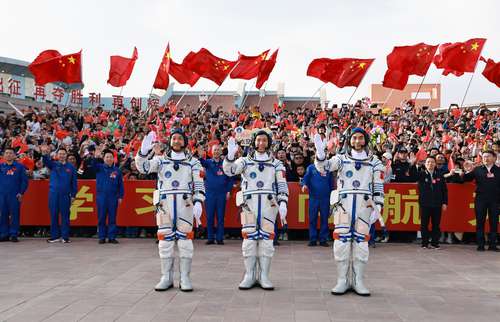The Shenzhou-18 rocket, launched by China, successfully reached the Tiangong space station with a crew of three astronauts known as “magic cow.” This mission is part of China’s ambitious aerospace program that aims to reach the Moon by 2030.
The Grand March-2F shuttle, a recent government spacecraft, was launched from Jiuquan Satellite Launch Center at 8:59 p.m. local time. The crew includes mission commander Ye Guangfu and taikonaut veterans Li Cong and Li Guangsu, former army fighter pilots. They will spend about six months conducting experiments and maintaining the space station.
Upon arrival, the astronauts will join the crew of Shenzhou-17 to continue research and experiments. They will also work on creating a self-sustaining aquatic ecosystem in space and cultivating vertebrates, marking a significant advancement for China’s space program.
In addition to its mission to the space station, China has completed the development of key components for a manned lunar landing. This includes the spacecraft, moon landing module, and space suits. The country plans to send three astronauts and the lunar landing module to the Moon using two rocket launches.
China’s space station was built after being excluded from the International Space Station in 2011. The US is also working to return astronauts to the Moon through the Artemis III mission, which has been delayed to September 2026 due to technical reasons.
Overall, China’s successful launch of the Shenzhou-18 rocket marks a significant milestone in its space exploration efforts, with plans to continue advancing its capabilities in space exploration and lunar missions.


